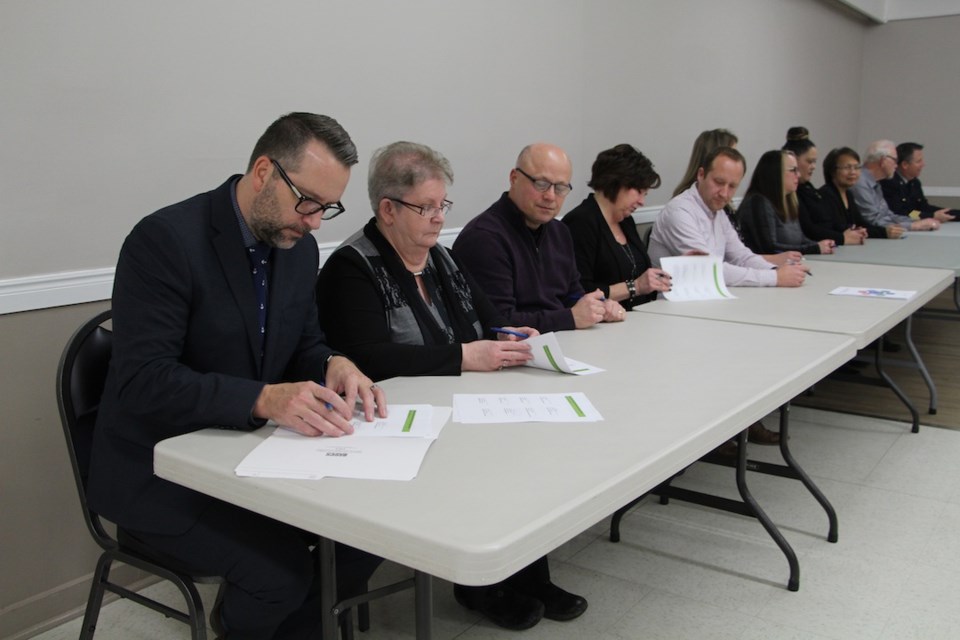Yorkton has updated its threat assessment protocols. The city’s school divisions, community organizations and emergency services signed the Community Support Threat Assessment Protocol on Nov. 22.
Kevin Cameron, executive director for the North American Center for Threat Assessment and Trauma Response, said as a result of the updated threat assessment – now on its third revision – Yorkton is on the cutting edge of threat assessment.
Cameron was also in town to provide training to people within the region to help them as they work on threat assessment. The program is based on things learned after the shootings in Columbine and Taber, Ab.
“Most people moving on a pathway to serious violence give unbelievable pre-incidence signs and indicators. They talk, they sometimes write. In this generation, they post online and on social networking. The problem is that a lot of people don’t understand when they see a piece of data that this might be the one that says we should collaborate with each other.”
The protocol is designed to recognize people when people pose risk, and set down rules to allow the sharing of information and planning interventions.
Multi-disciplinary risk assessment is a relatively new development. In order for the different organizations to collaborate, they need to have signed, formal protocols like the one just signed to allow for cooperation between agencies.
“Most organizations function pretty tightly in their silos, they don’t want to share information, but there are times when the law allows us to collaborate,” said Cameron.
Getting agencies to sign on to the protocol creates a shared program, which allows for more collaboration between agencies.
“It means that the rules surrounding sharing information are not as stringent as one professional deciding, ‘should I share?’ First of all, that’s essential. Second of all, a lot of well-meaning people make mistakes because they’re not trained properly in what data to collect, how to assess the data. So mistakes have been made all across North America where people thought a person wasn’t at risk when realistic they were. The protocol also means that all the agencies will be using the same criteria, the same variables, to determine risk, and that changes everything.”
Keeping it a living document, and continually re-signing the protocol, is important because new information is constantly being learned and new threats have to be recognized.
“We used to say that we find the most blatant evidence of planning, that someone is moving on the pathway to violence, in the locker at the school if it’s a kid, in the backpack. There’s the bedroom dynamic, where parents and caregivers don’t go in the bedroom and all the evidence is there. In the past ten years we added a new one, digital data collection. Now we find blatant evidence online, which was not an issue the way it is now... Even those kinds of changes make it necessary for regions to constantly renew their practice, but stay in contact with those of us who do the research and development in this area.”




